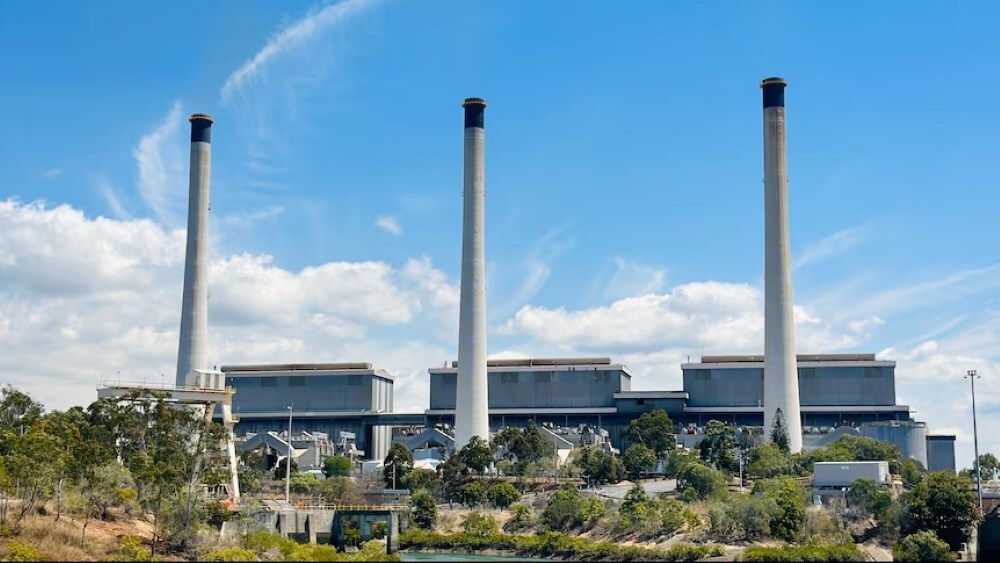

Queensland's energy landscape is on the brink of a significant shift, as mining giant Rio Tinto reveals its plans to potentially retire the Gladstone Power Station ahead of schedule, aiming for March 2029, six years earlier than initially planned. This coal-fired power plant, which has been operational since 1976, has played a crucial role in supplying energy to the region, boasting a generation capacity of up to 1,680 megawatts across its six turbines.

On October 1, 2025, CS Energy officially notified the Australian Energy Market Operator (AEMO) about the possible closure. This formal notice gives the market the necessary 3.5-year lead time as outlined in the National Electricity Rules.
Why exit early?
The recent move is in line with the expiring supply contracts with Boyne Smelters Ltd, which is part of Rio Tinto's aluminium operations and represents about 10 per cent of Queensland's total electricity use. As Rio Tinto shifts its focus toward renewable energy, it's gearing up its aluminium operations to stay competitive on a global scale. In 2024, the company signed Australia's most significant renewable power purchase agreements, securing 2.7 gigawatts of wind and solar energy for its facilities in Gladstone.
Gladstone timeline
In March 2025, Rio Tinto made a significant move by securing solar and battery agreements with Edify Energy, marking a key step in its shift towards renewable energy. By the end of 2025, it kicked off construction on the Smoky Creek and Guthrie's Gap Solar Power Stations, with plans for more renewable projects aiming for completion by 2028. The contracts for the Gladstone Power Station are set to run out in 2029, after which a support package from the Queensland government will be rolled out for Boyne Smelters.
Unavoidable impacts
Rio Tinto's operations in Gladstone provide over 3,000 direct jobs, with the power station itself employing several hundred people through operator NRG Energy and various contractors. Dave Copeman, the Director of the Queensland Conservation Council, referred to the closure as "proof that heavy industry and the private sector are making strides toward a more cost-effective renewable energy future."
Environmental advocates have welcomed this news, pointing out that Gladstone is Queensland's oldest and largest coal-fired plant and has been identified as the second least reliable coal station in the nation.
Also read: Rio Tinto & founders factory unveil new investments reducing the impact of mining
Local advocate Emma Smith stated, "Our community has been the powerhouse of Queensland for decades, and we can be for decades into the future if we plan for changing global demand and build new clean industries."
Energy replacement
Rio Tinto has put together a diverse renewable energy portfolio to power its operations in Gladstone. This includes 600 MW from the Smoky Creek and Guthrie's Gap solar stations, along with 600 MW / 2,400 MWh of battery storage. It is also tapping into 4 GW from Windlab's Bungaban wind project and 1 GW from European Energy's Upper Calliope solar farm.
Together, these efforts are projected to cover 80 per cent of Boyne Smelter's yearly electricity needs, cutting carbon emissions by 70 per cent, which is about 5.6 million tonnes a year. It's worth mentioning that the battery storage systems are a first for Rio Tinto in Australia, helping to tackle the challenges of renewable energy generation.
Governmental support
As part of its Energy and Jobs Plan, the Queensland government is set to roll out a support package starting in 2029. This initiative aims to help Boyne Smelters stay competitive during the shift to renewable energy.
Premier Steven Miles emphasised the importance of this deal, stating it "secures one of our biggest employers, but also one of our biggest emitters."
According to the agreement, Rio Tinto must keep the smelter running at full capacity until 2040, continue investing in capital projects, fulfil employment commitments and develop demand response capabilities to help maintain grid stability. On top of this, the federal government has launched a USD 1.7 billion production credit scheme for low-carbon aluminium, which will further support the industry's transition to clean energy.
Also read: Rio Tinto adjusts aluminium strategy after US tariffs
Future possibilities
The planned closure mirrors broader industry trends, as traditional coal-fired generation becomes increasingly costly and less reliable than renewable alternatives. Queensland currently sources 27% of its electricity from renewables, with targets of 50 per cent by 2030 and 80 per cent by 2035.
Rio Tinto Chief Executive Australia Kellie Parker stated: "These agreements are integral to repowering our Gladstone aluminium operations with affordable, reliable and lower carbon energy for decades to come."
The company's presence in Gladstone includes three key facilities: the Boyne aluminium smelter, which has an annual capacity of 545,000 tonnes, the Yarwun alumina refinery and the Queensland alumina refinery. Together, these facilities employ over 4,500 people directly and provide support for thousands more in the surrounding area.
No final decision has been reached yet about the closure of the Gladstone Power Station. The joint venture partners, Rio Tinto (holding a 42.125 per cent stake), NRG Energy and their Japanese collaborators will keep engaging with stakeholders until March 2029 to explore their options. If market conditions shift, the mandatory notice period could be extended, with Rio Tinto mentioning the "possibility of prolonging the power station's operation if market and other factors permit."
In the meantime, operations will carry on as usual and current power contracts will stay in place until they expire in March 2029. During this time, the region will need to make important planning decisions regarding workforce transitions, site cleanup and establishing Gladstone as a hub for renewable energy manufacturing.
To know more about the global primary aluminium industry 2025 outlook, read “Global Aluminium Industry Outlook 2025”
Responses








